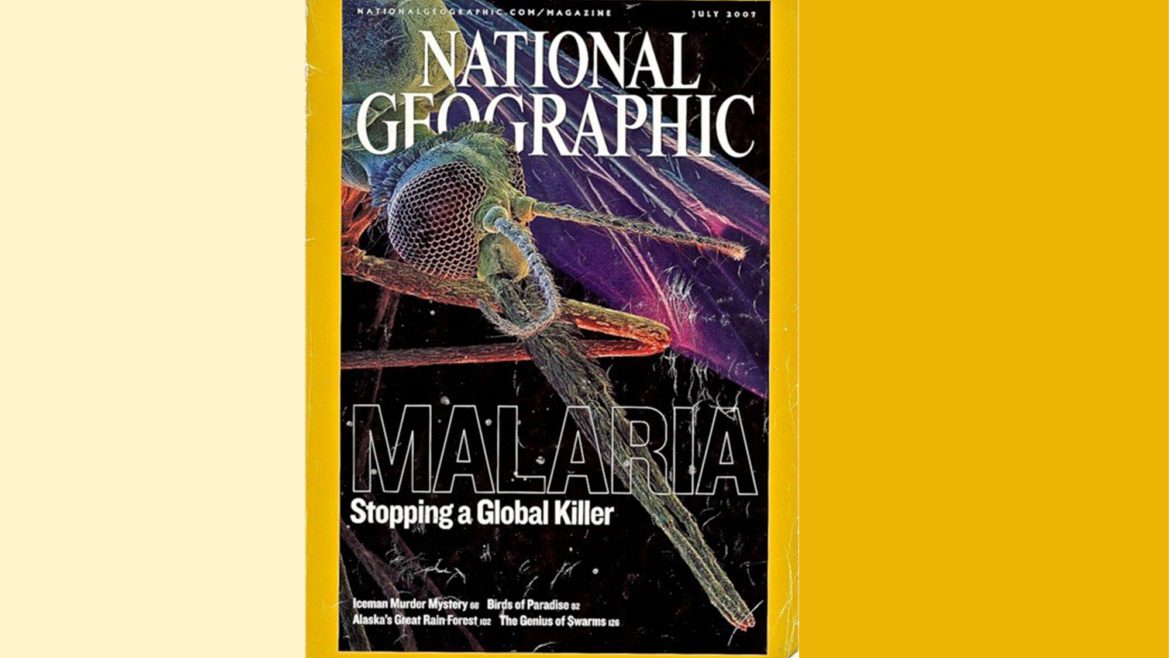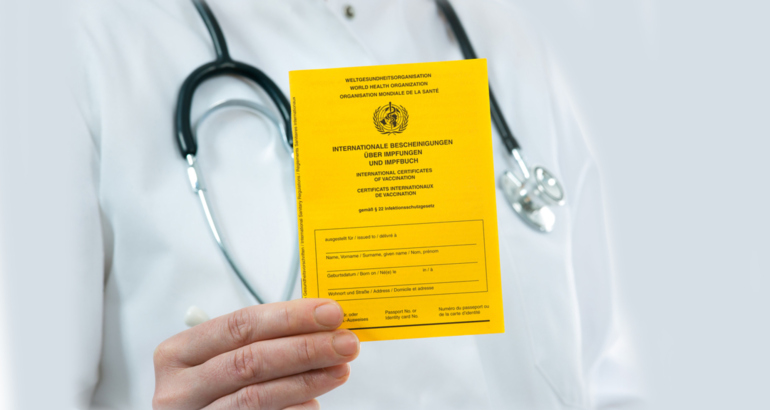Malaria is an international public health problem .It presents with fever and influenza like symptoms, including chills, headache, myalgias, and malaise; these symptoms can occur intermittently. In severe disease, seizures, mental confusion, kidney failure, acute respiratory distress syndrome, coma, and death may occur. Malaria symptoms can develop as early as 7 days after being bitten by an infectious female anopheles mosquito in a malaria-endemic area and as late as several months or more after exposure.
Malaria prevention consists of a combination of mosquito avoidance measures and chemoprophylaxis
Malaria prophylaxis necessitates finding a balance between efficacy and safety, ensuring that all people at risk of infection take the required precautions and avoiding rare cases of side effects. Every visitor should do an individual risk assessment, taking into account not only the destination country but also the exact itinerary, which includes specific cities, types of lodging, season, and travel style. The risk assessment may be influenced by traveler factors (such as pregnancy or underlying health issues) as well as malaria features at the destination (such as transmission intensity and local parasite resistance to medicines). Depending on the amount of risk, no specific interventions, mosquito avoidance measures solely, or mosquito avoidance measures plus prophylaxis may be indicated.
Obtain a precise itinerary that includes all probable destinations that will be visited during the trip, and check to determine if malaria is transmitted in these areas. The Malaria Information by Country Table (https://www.cdc.gov/malaria/travelers/country_table/a.html) provides thorough information on the areas of a country where malaria transmission occurs, prevalent species of malaria that occur there, the occurrence of treatment resistance, and the specific drugs that CDC advises for use in malaria prophylaxis.
Perform a risk assessment that is unique to you.
Malaria prevention requires striking a balance between ensuring that all people who are at risk of infection take the proper precautions and avoiding the negative consequences of those interventions among those who use them excessively. Every visitor should do an individual risk assessment, taking into account not only the destination country, but also the precise itinerary, which includes specific cities, types of lodging, season, and travel style. Furthermore, factors like as pregnancy or the presence of anti-malarial drug resistance at the destination could alter the risk estimate.
Drugs used in the prophylaxis of malaria
| DRUG | USAGE | ADULT DOSE | PEDIATRIC DOSE | COMMENTS |
|---|---|---|---|---|
| Atovaquone-proguanil | Prophylaxis in all areas | 250 mg atovaquone + 100 mg proguanil hydrochloride. Dose is 1 adult tablet orally, daily | 62.5 mg atovaquone + 25 mg proguanil hydrochloride. <5 kg : Not recommended 5–8 kg: 1/2 pediatric tablet daily >8–10 kg: 3/4 pediatric tablet daily >10–20 kg: 1 pediatric tablet daily >20–30 kg: 2 pediatric tablets daily >30–40 kg: 3 pediatric tablets daily >40 kg: 1 adult tablet daily | Begin 1–2 days before your go to a malaria prone place. And continue for seven days after leaving it. People with severe renal impairment (creatinine clearance 30 mL/min) , pregnant and breast feeding women feeding babies <5 kg should avoid it. |
| Chloroquine | Prophylaxis only in areas with chloroquine-sensitive malaria | 300 mg base (500 mg salt) orally, once/week | 5 mg/kg base (8.3 mg/kg salt) orally, once/week, up to maximum adult dose of 300 mg base | Begin 1–2 weeks before your trip to a malaria prone place. Take once a week on the same day of the week while in the malaria prone area and for four weeks after you’ve left it. It’s possible that it’ll make your psoriasis worse. |
| Doxycycline | Prophylaxis in all areas | 100 mg orally, daily | ≥8 years of age: 2.2 mg/kg up to adult dose of 100 mg/day | Start 1–2 days before your trip to a malaria-prone area. Take it every day at the same time while you’re in a malaria-prone location and for four weeks after you leave. Pregnant women and children under the age of eight are both contraindicated. |
| Hydroxychloroquine | An alternative to chloroquine for prophylaxis only in areas with chloroquine-sensitive malaria | 310 mg base (400 mg salt) orally, once/week | 5 mg/kg base (6.5 mg/kg salt) orally, once/week, up to a maximum adult dose of 310 mg base | Begin 1–2 weeks before your trip to a dangerous place. Take once a week on the same day of the week while in the malaria-prone area and for four weeks after you’ve left it. |
| Mefloquine | Prophylaxis in areas with mefloquine-sensitive malaria | 228 mg base (250 mg salt) orally, once/week | ≤9 kg: 4.6 mg/kg base (5 mg/kg salt) orally, once/week >9–19 kg: 1/4 tablet once/week >19–30 kg: 1/2 tablet once/week >30–45 kg: 3/4 tablet once/week >45 kg: 1 tablet once/week | Begin 2 weeks before your trip to a dangerous place. Take once a week on the same day of the week while in the malaria-prone area and for four weeks after you’ve left it. People with active depression, a recent history of depression, generalized anxiety disorder, psychosis, schizophrenia, other significant mental disorders, or seizures should not take mefloquine or similar chemicals (quinine, quinidine). In those with psychiatric disorders or a history of depression, use with caution. People with cardiac conduction disorders should avoid it. |
| Primaquine1 | Prophylaxis for short- duration travel to areas with principally P.vivax | 30 mg base (52.6 mg salt) orally, daily | 0.5 mg/kg base (0.8 mg/kg salt) up to adult dose orally, daily | Begin 1–2 days before your go to a dangerous place. Take once a day at the same time while in the malaria-prone area and for seven days after leaving it. |
| Presumptive antirelapse therapy (PART or terminal prophylaxis) to decrease the risk for relapses of P. vivax and P. ovale | 30 mg base (52.6 mg salt) orally, daily | 0.5 mg/kg base (0.8 mg/kg salt) up to adult dose orally, daily | PART is recommended for those who have been exposed to P. vivax, P. ovale, or both, and should be taken daily for 14 days after leaving the malaria-prone area. In patients who have a G6PD deficiency, this supplement is not recommended. Also, unless the infant being breastfed has a verified normal G6PD level, it is prohibited during pregnancy and breastfeeding. | |
| Tafenoquine1 | Prophylaxis in all areas | 200 mg orally | Not indicated in children <16 years old | Start taking it three days before you travel to a dangerous place. Then take once a week while in the malarious area and once a week after you leave. |
| Presumptive antirelapse therapy (PART or terminal prophylaxis) to decrease the risk for relapses of P. vivax and P. ovale | 300mg orally | 300mg orally | PART is recommended for those who have been exposed to P. vivax, P. ovale, or both for an extended period of time: It is given in a single dose. In patients who have a G6PD deficiency, this supplement is not recommended. Also, unless the infant being breastfed has a verified normal G6PD level, it is prohibited during pregnancy and breastfeeding. |
Abbreviation: PART, presumptive antirelapse therapy.
All people who take primaquine or tafenoquine should have a documented normal G6PD level before starting the medication.



